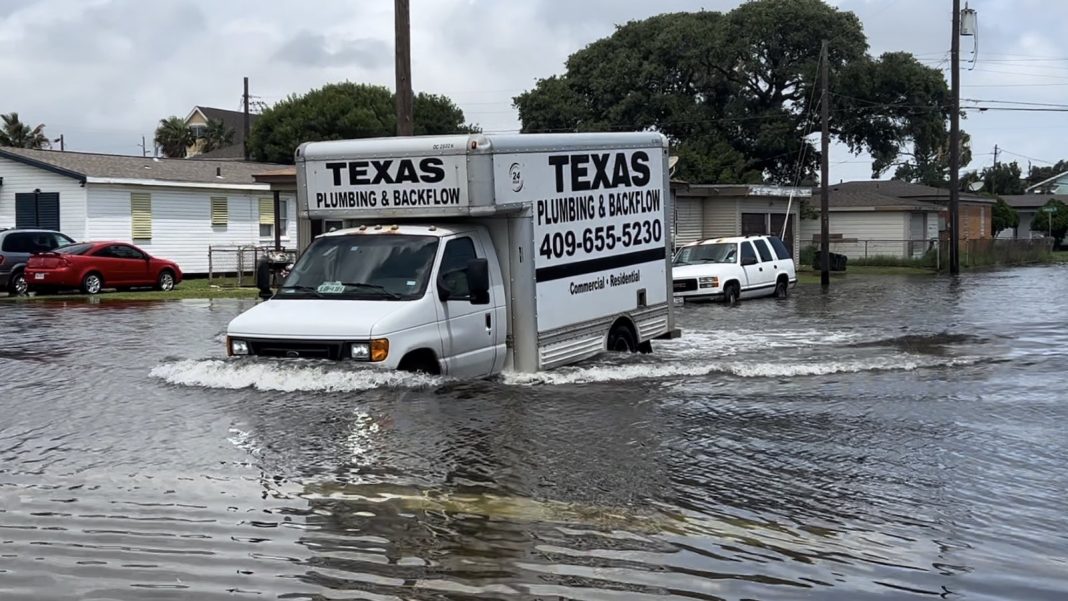[Lee en español]
The center of lopsided Tropical Storm Alberto pushed ashore just before dawn Thursday, June 20, near Tampico, Mexico. Alberto’s top sustained winds were estimated at 50 mph just prior to landfall. The system quickly decayed to a tropical depression by 11 a.m. EDT as it moved inland, and Alberto was predicted to be a remnant low by Thursday night.
In Tampico itself, the impacts from Alberto were minimal. Sustained winds at the international airport peaked at a mere 21 mph, with peak gusts to 29 mph, and little rain fell in the drought-stricken city. However, Alberto’s tentacles stretched far more broadly than usual for a tropical storm. That’s because Alberto developed within an unusually broad area of strong, moist southeasterly flow, driven by a Central American Gyre to its south and a powerful ridge of high pressure to its north.
Alberto’s rains were especially heavy northwest of its landfall across the higher terrain of Nuevo León state. According to the Associated Press, at least one death occurred from widespread flash flooding in the state capital of Monterey. Further north in Coahuila state, two children biking in heavy rain were killed in the city of Allende.
The huge zone of tropical-storm-strength winds on the north side of Alberto pushed a storm surge of 1 to 3 feet across much of the Texas coast, leading to widespread coastal flooding with some isolated spots of major flooding. Some of the most noteworthy high water from Wednesday into Thursday morning occurred in Galveston and nearby Surfside Beach (see image at top and Fig. 1 below).

A sequel to Alberto may arrive by late weekend
With the large-scale pattern changing little, another disturbance now in the Northwest Caribbean may be on track to follow in the footsteps of Alberto and develop into a tropical cyclone over the Bay of Campeche over the next several days. Showers and thunderstorms were continuing to increase on Thursday east and south of the Yucatan Peninsula, in a region of very high atmospheric moisture content. Light wind shear and near-record-warm sea surface temperatures would also help support development of this new system. Time over water will again be limited, as with Alberto, but the concave geography of the Bay of Campeche could support quick development into a tropical storm. The surrounding low-level field would likely be weaker than with Alberto, so any storm surge may not extend as far north into Texas. However, a new system might cause greater flooding than would ordinarily be the case, since its rains would be falling on soils already saturated from Alberto.
A number of ensemble members of the GFS and European models show a tropical cyclone developing over a track quite similar to Alberto, with a potential landfall around Sunday.
In its Tropical Weather Outlook issued at 2 p.m. EDT Thursday, the National Hurricane Center gave this system 2- and 7-day odds of development of 20 and 50 percent, respectively. Update: The 2 a.m. EDT Saturday outlook from NHC gave this system 2- and 7-day odds of development of 50 percent. Any short-lived tropical depression or tropical storm that does form would likely follow a similar course to Alberto, most likely strengthening across the Bay of Campeche on Saturday and Sunday and reaching the coast of northeast Mexico by late Sunday or early Monday.
A small, short-lived tropical cyclone could affect the Southeast U.S. coast on Friday
Also worth monitoring is a persistent disturbance called Invest 92L that was heading westward to the north of the Bahamas on Thursday. 92L was traversing near-record-warm sea surface temperatures of around 28 degrees Celsius (82 degrees Fahrenheit). Surface pressures were fairly high, but ample spin was evident on satellite imagery at midday Thursday. A low-level swirl evident on satellite had failed to consolidate showers and thunderstorms (convection) around it, amid a fairly dry mid-level atmosphere (relative humidity of 45-50 percent). By Thursday afternoon, the center of 92L was tucking beneath convection, increasing the odds of development. An Air Force hurricane-hunter plane was investigating the system on Thursday afternoon.
Wind shear along the track of 92L will increase from a light 5 knots on Thursday to around 15 knots by early Friday, as the disturbance approaches the coast of Georgia and northern Florida. A few of the GFS ensemble members bring a weak surface center onshore. If this system does develop, it would have little time to become anything more than a tropical depression or perhaps a minimal tropical storm. In its Tropical Weather Outlook issued at 2 p.m. EDT Thursday, the National Hurricane Center gave this system 2- and 7-day odds of development of 40 percent. Update: Reconnaissance flights on Friday morning found a weak low-level circulation with surface winds up to 35 mph, but NHC announced in its 2 p.m. EDT Tropical Weather Outlook that 92L was not yet organized enough to merit being designated a tropical depression. Dry air was continuing to inhibit convection from wrapping fully around a low-level center that was fully visible at times. The system moved onto the Georgia coast on Friday night without having developed into a tropical cyclone.
We help millions of people understand climate change and what to do about it. Help us reach even more people like you.


